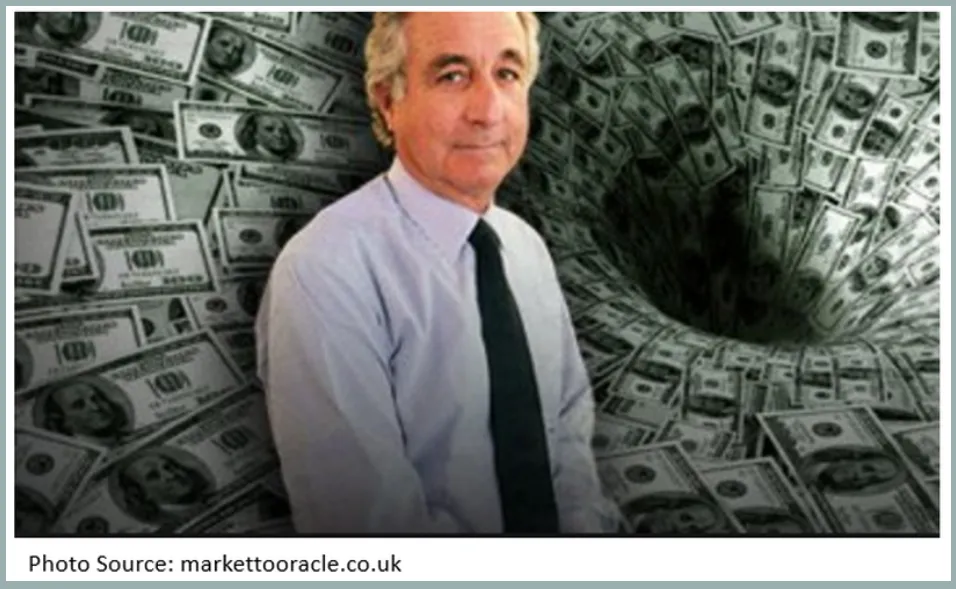
The case that I'll be summarizing and discussing is entitled “Bernie Madoff Ponzi Scheme”. Let me first give you a brief history of one of the most hated, if not the most hated fund manager in the investment world, because of the thousands of direct and indirect victims that he defrauded. Bernard Lawrence Madoff or popularly known as Bernie Madoff was born on April 29, 1938, was a former stockbroker, investment advisor, and financier. He is the founder and chairman of the Bernard L. Madoff Investment Securities, which was the largest market maker at NASDAQ, and sixth largest on Wall Street. Madoff was also the former chairman of the National Association of Securities Dealers Automated Quotations (popularly known as the NASDAQ) stock market.
Madoff also held influential positions in various securities and financial organization like the Securities Industry and Financial Markets Association, and International Securities Clearing Corporation. We can say that Madoff has had a successful career in the financial industry as both a businessman and administrator, which gained the respect of industry executives, investors and the government. However, on June 29, 2009, he was found guilty of operating the largest Ponzi scheme in history to the tune of USD64.8 billion by federal authorities. He was sentenced to 150 years in prison, which is the maximum allowed sentence to convicted criminals.
The objective of this case is to illustrate how the unethical behavior of Bernard Madoff devastated the trust of the whole financial, specifically, the investing community. This discussion will also show how it is possible for a well-known, respected public figure to betray the trust of investors with his unethical and illegal Ponzi scheme. This summary will also explain how stakeholders and gatekeepers failed at stopping Bernard Madoff in conducting the Ponzi scheme.
But what really is a Ponzi scheme? Ponzi, is that a name? In fact, yes it is. The first Ponzi scheme dates back as early as the 1920s, when a person named Charles Ponzi committed a massive fraud by claiming that thru his investment clients can earn a 50% profit in one and a half months, or 100% profit in three months. Oh, here take my money… Just kidding. Ponzi lured his investors by explaining that his business is to buy discounted or less than it’s real value postal reply coupons in other countries, and redeem or sell them at their real value in the US. Ponzi will be earning a riskless profit just from the price differential. Initially, he is running a legitimate operation coming from the investments, but soon he discovered that it was too much work, and he started to pay earlier investors using the investments of later or new investors, and that no merchandise or product is being bought and sold. Very clever, huh. But we all know that this vicious cycle is really hard to sustain, because the scammer has to continuously look for more and more additional investors to support the growing number of investments. Ponzi was unable to sustain the scam, and eventually collapsed and he got arrested.
The modern-day Ponzi scheme was recently witnessed in the case of Bernard Madoff. A much bigger scheme to the tune of billions of dollars. Madoff operates a successful legitimate investment business, which earned him a good reputation as a money manager. As Madoff became more successful and influential, he began to be more involve in lobbying for financial market regulations by having a seat on the government advisory board on stock market regulation, charitable boards and even his own foundation, the Madoff Family Foundation, which further contributed to his trustable and respectable public image. For many years, investors and regulators have been blinded by his legitimate success in managing money as he seems trustworthy and credible. This is also the reason why his promised return of 10 to 12 percent regardless of the economic condition through a split-strike conversion strategy (also called collar strategy), which is in fact a viable investing strategy that reduces the volatility, provides consistent returns and protects a trading position against losses.
The promised return and the strategy was never questioned in a way that will demand a regulatory inquiry, because of it’s trading viability. Meaning, it is possible to have those returns, given the perfect execution of the trade. With his promise, he successfully attracted thousands of investors with billions of dollars, which include many experienced investors such as banks and insurance companies. However, in reality Madoff did not invest most of his investors’ money. While he maintains during the investigation that the family business was legitimate, and that he is operating his own Ponzi scheme separate from the real business with his trusted right-hand man, Frank DiPascali. Authorities believe that there may be instances that cash flows from the scheme are also flowing into his legitimate business. According to investigation, Madoff simply moves the money back and forth between Chase Manhattan Bank in New York and his company based in the United Kingdom. As for the payment for the old investors, he will just use the newly invested money as a kind of return.
This is the end of the first part of Madoff's case. See you on the second part.